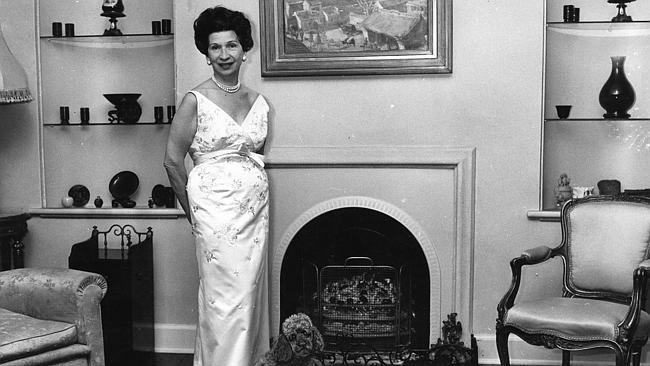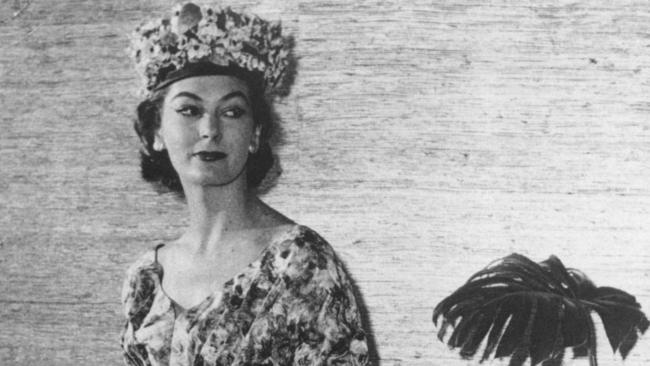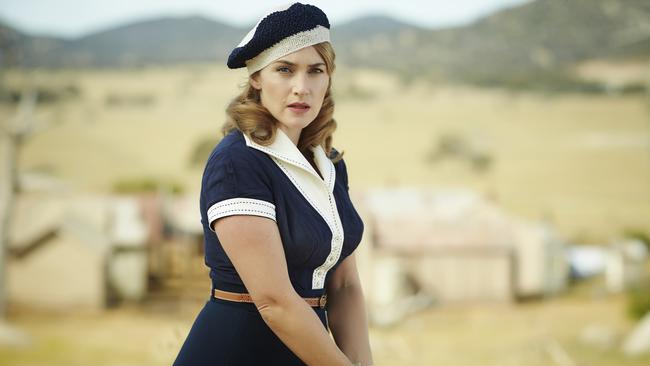The real-life Sydney fashion queens who inspired The Dressmaker movie starring Kate Winslet
Couture dressmaker Tilly Dunnage of Dungatar is a work of fiction, but her story owes much to Sydney fashion doyennes who stitched up 1950s Parisian glamour for Sydney ladies about town.

Today in History
Don't miss out on the headlines from Today in History. Followed categories will be added to My News.
Couture dressmaker Tilly Dunnage of Dungatar is a work of fiction, but her story owes much to fashion doyennes “Little Ol’ Beryl From Bondi” and Russian emigre Vera Fels, who stitched up 1950s Parisian glamour for Sydney ladies about town.
Bondi Junction seamstress Beryl Strudwick graduated from helping her mother Alice with dressmaking to become “Australia’s Queen of Haute Couture” as Beril Jents, who described her best known client Elizabeth Taylor as “scruffy”.
Fels hosted regular parades for her Genevieve Rocher label, showing Paris originals alongside half-price local reproductions, at a grey salon with champagne drapes in King St.
As Dunnage, played by Kate Winslet in The Dressmaker movie opening in Sydney today, explains, “My design, but Dior inspired”.
When the world emerged from functional, austere wartime day-dresses and suits, Jents and Rocher epitomised 950s glamour. Their salons billowed with opulent frocks, full skirts nipped into tight bodices draped from jewel-hued chiffons, shiny taffetas and lustrous satins.
Jents, born in 1918, sewed her first dress at nine, designed her sister Leila’s wedding dress at 13, then served an apprenticeship with French-born dressmaker Madame Gallet, where she learnt to cut without a pattern, and drape fabric.

Gallet returned to France in 1934, when Jents opened her studio in Charing Cross, Waverley. She moved to Bondi Junction, then Macleay St, Kings Cross, tailoring made-to-measure garments for a select clientele and experimenting with design.
After marrying Gordon Gent, she traded as Beril Jents from 1944, opening a salon in the St James building in the city in 1950. Jents was invited to represent Australia at a New York fashion show in 1952, alongside Norman Hartnell for England and French Givenchy. From 1953, she collaborated on costumes with actors including Noel Coward and dancer Robert Helpmann.
Australian women then had plenty of reasons to dress up for balls and race meetings to celebrate Queen Elizabeth’s coronation, her 1954 royal tour, then the 1956 Melbourne Olympics.
French wool buyers in Sydney from the mid-1800s introduced had French chic, and wealthy Australian women travelled to Europe for designer outfits. From 1900 others could purchase through stores such as David Jones, which offered a French salon. Everyone else crafted their own styles, with East Sydney Technical College adding a professional edge from 1920.
Former Parisian dressmaker Paulette Pellier, “small, plump, and as French as the Rue de la Paix (fashion hub)”, in the 1920s offered pintucked, hand-embroidered blouses and sold gowns for 35 guineas from Madame Pellier salon in Sydney’s St James Building. In the ’50s she also adapted Christian Dior styles.

Lillian Wightman, described by daughter Georgina Weir as “a girl from Ballarat who hadn’t been anywhere”, created her version of a French salon at Le Louvre on Melbourne’s Collins St in 1922.
Fels and her art dealer husband Charles fled Russian Bolsheviks to Paris and arrived in Sydney with two French seamstresses in the early 1930s. They followed Pellier to the elegant St James Trust Building, opening a salon in 1935. Fels visited Paris annually to cultivate “relationships with the couturiers”.
Retailers Norman Myer and Charles Lloyd Jones of Sydney’s David Jones joined publisher Frank Packer to up the ante in 1946. Packer sent Australian Women’s Weekly fashion editor, his sister-in-law Mary Hordern, to Paris to select fashions for parades around the country. She returned with 120 beach, day and evening outfits, although they were not for sale.
After the parade opened in the Grand Ballroom at David Jones’ Elizabeth Street store on September 16, 1946, coverage in the Weekly sent circulation soaring to 700,000 copies a week.
As Dior launched his first collection in Paris in 1947, David Jones became the first Australian retailer to purchase a complete haute couture collection of 60 garments. More than 800 people packed David Jones’ Elizabeth Street store for a gala viewing of the French designs, shown alongside half-price Australian adaptations.
For a 1953 Coronation parade, Jents created a “sheath-like evening gown in ink blue taffeta on Dior’s Tulip line, its stem-slim skirt blossoming out into a draped big sleeved top”. She also included a “sun dress made of tea towels — just white linen tea towels striped in red and green.” Already designer of choice for women from retailing Hordern, Fairfax media and Maccarthur-Onslow grazing families, Jents’ international clients included Margot Fonteyn, Winfred Atwell, Vivien Leigh and Eartha Kitt.
“Dionne Warwick came in and spent a lot of money — $10,000. I wonder who told her about me?” Jents pondered in 1985, adding “I can’t believe this is little Beril from Bondi Junction sitting here.”
Originally published as The real-life Sydney fashion queens who inspired The Dressmaker movie starring Kate Winslet


